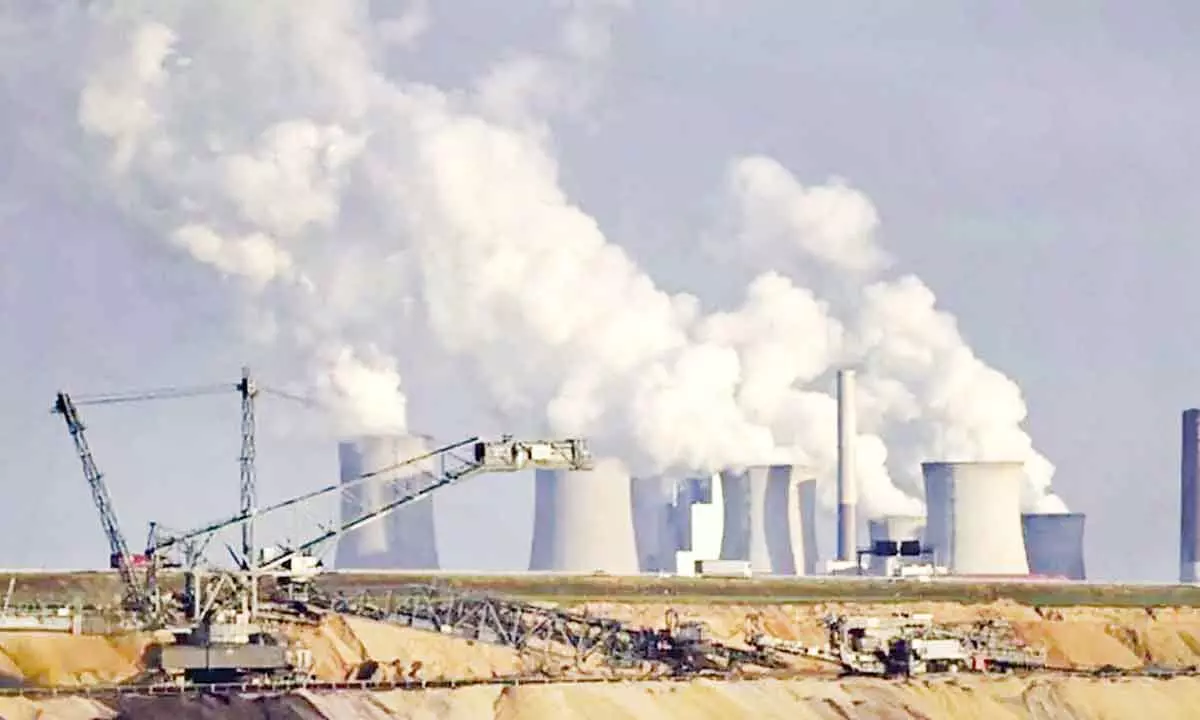Now, Europe will experience the pain of developing economies

European countries shifting to coal is a salutary lesson and hopefully there will be more understanding of the situation facing developing economies at future climate summits
Karma can be unforgiving. European countries now scrambling to revive the use of coal for power generation, may find it uncomfortable to remember their anger over India's stance on coal use barely eight months ago at the COP 26 summit in Glasgow. At the time, the European Union envoy had loftily declared that the longer one takes to phase out coal, the more burden is put on the national environment and the economy. He was speaking in the context of India and China having joined hands to change the term 'coal phase out' to 'coal phase down' in the final declaration of the summit.
At the time, it must be recalled, the two countries had taken this stance due to their continued reliance on coal-fired power plants for meeting power generating needs. In contrast, as was pointed out by many climate experts, developed countries had the advantage of utilizing cheap natural gas, which is viewed as cleaner fuel. Even so, it remains a fossil fuel and developing countries had sought a mention in the declaration of the need to phase out all fossil fuels rather than putting the focus only on coal. The net result was that even the president of the summit mentioned the change in terminology tearfully while announcing the changes at the conference.
One wonders what his reaction will now be to the news that European countries are switching on their coal-fired plants in a bid to overcome the shortage of natural gas supplies from Russia. Among countries that have announced plans to restart such plants are Germany, Italy, Austria, and the Netherlands. As Russia has indicated that natural gas supplies through the Nordstream 1 pipeline will be cut down, these countries are preparing contingency plans for meeting the challenge of high gas prices and energy shortages.
Germany plans to restart coal plants that were supposed to be phased out in a bid to ensure that gas storage facilities have enough supplies to meet the soaring demand in winter. Italy was informed only days ago that its full requirement of gas supplies could not be met, prompting it to consider raising output from coal based plants. The Netherlands said it would remove a cap on production from coal- fired plants. And Austria has declared it will convert a gas-based plant to coal in case there was an energy emergency. These measures represent a huge climbdown from the EU stance at the climate summit where any mention of coal use by developing countries was regarded as a major setback to global efforts to reduce emissions.
India, on its part, is seeking to fulfil commitments to reduce reliance on coal and shift to renewables but the task will span several decades. Power generation from coal currently comprises 51 per cent of the country's energy needs, according to statistics released by the Ministry of Power. In contrast, hydel power comprises only 11 per cent while natural gas accounts for 6.3 per cent. Renewable energy sources, on the other hand, have now reached 28 per cent which includes 14 per cent of solar energy and 10 per cent comprising of wind energy.
Ambitious targets set for renewables have actually been achieved earlier than expected in recent years but even so, coal remains the primary fuel for power generation purposes. The major reason is easy availability as the country sits on huge reserves of this mineral. It is also a much cheaper energy source as compared to crude oil which is costing the country over 100 billion dollars annually to import for meeting fuel needs.
But there are major difficulties in dealing with issues related to coal supply and distribution in addition to the adverse environmental impact of this fuel. It must be recalled that in recent years there have been two power emergencies stemming from lack of coal availability at thermal plants. The first was in October 2021 and the second was in March this year. Both crises emerged due to a mismatch in rail loading and despatches of coal from pitheads to the plants. As a result, it was decided to revive plants based on imported coal despite the soaring prices in world markets.
In other words, sticking to coal owing to the argument of easy availability is no longer the most viable option. In fact, it would be wiser to put more resources into development of non-fossil fuel power plants. Hydel energy, for instance, has so far been vastly under-utilised and greater push needs to be made in this direction. Energy from nuclear power also remains at a relatively low level in the overall energy mix despite the enormous potential in this area as well.
Progress on renewable energy had been rapid after the Paris Climate Summit in 2015. Over 90 per cent of India's 54 gigawatt of solar capacity had been installed since then. Even during 2020-21, the country added a record 13.9 GW of solar capacity. However, latest reports suggest that the progress in moving towards the target of 500 GW by 2030 has been uneven as some states have lagged behind. These include Punjab, Haryana and Uttar Pradesh while others like Rajasthan and Telangana have had better results.
In any case, it must be accepted that developing countries like India face many challenges in shifting from coal and other fossil fuels to renewable energy sources. The one huge advantage that developed countries in Europe and the US have had till recently has been access to cheap and sustained supplies of natural gas. Though Europe is facing a crisis due to curbs on gas supplies from Russia, the US still has relatively cheaper domestic gas available for consumption. In this backdrop, it is evident that even developed countries are quick to drop environmental concern in favour of easier energy supplies in the face of such crises. It is a salutary lesson and hopefully there will be more understanding of the situation facing developing economies in future climate summits.



















